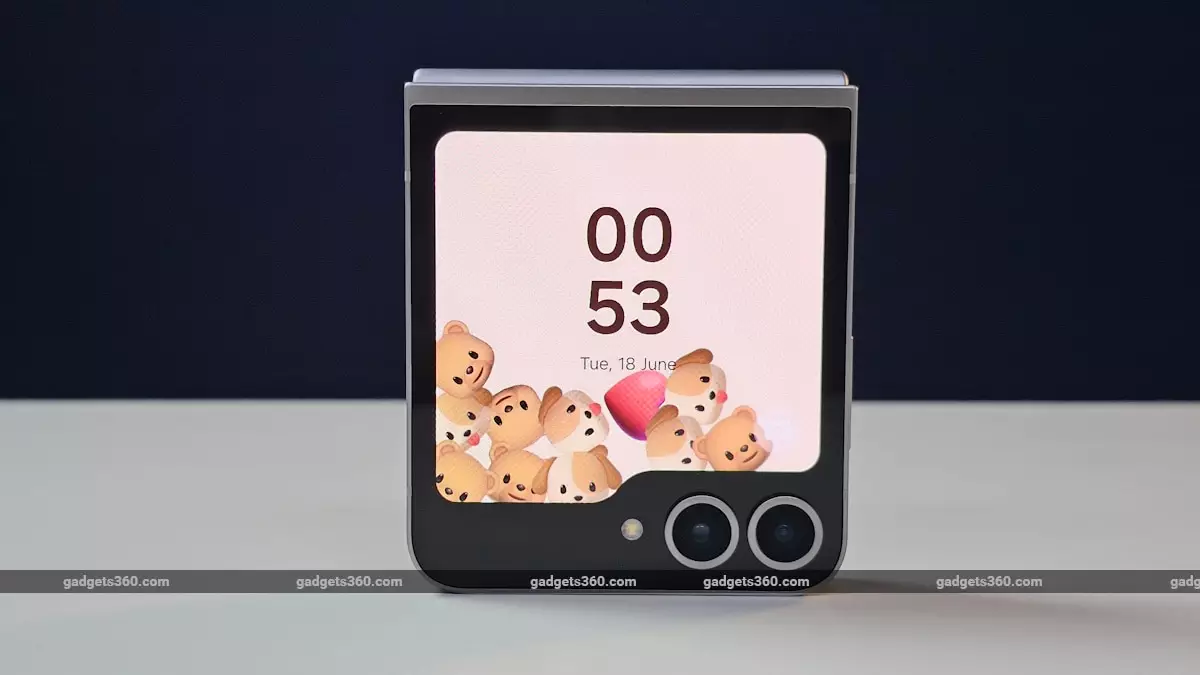The realm of smartphone technology has continuously transformed over the years, yet innovation rarely appears as pivotal as the potential change brought forth by Samsung’s partnership with LG. As we enter an era increasingly dominated by foldable devices, notably the clamshell-style Galaxy Z Flip, the traditional approach to sound and audio during phone calls is getting a significant overhaul. This evolution is not merely an enhancement; it represents a vital shift in user interaction with smartphones.
The current iteration of foldable smartphones, such as the Galaxy Z Flip 6, presents challenges, particularly in the realm of sound management. Presently, users are compelled to answer calls using the phone’s external speaker while the device remains closed, a configuration that compromises privacy. When confidentiality in conversations is paramount, having to unfold the device is not just an inconvenience; it significantly detracts from the user experience and the sleek design that foldable phones aspire to achieve. The need for a practical solution is evident, spurring Samsung and LG’s innovative research.
According to reports from the esteemed Korean outlet Sisa Journal, Samsung and LG are collaborating on a groundbreaking technology that reimagines audio output in foldable devices. Instead of employing a conventional ear speaker, the two companies are developing a novel display that integrates piezoelectric technology. This innovation aims to provide users with a mechanism to answer calls privately without requiring them to physically open their phones.
This technological advancement is not merely a cosmetic upgrade; it is anticipated to fundamentally enhance the functionality of foldable smartphones. The integration of a piezoelectric speaker embedded within the display allows for sound generation through vibrations, effectively eliminating the need for a traditional ear speaker. Such an arrangement not only conserves valuable space—critical in the tightly packed confines of foldable designs—but also uses advanced materials and techniques to maintain sound quality.
Piezoelectric technology, which converts electrical energy into mechanical movement, is not without precedent in the smartphone industry. The Xiaomi Mi Mix was an early adopter of this technique back in 2016, which sought to eliminate bezels by using a piezoelectric ceramic earpiece. The Mi Mix’s unique design and approach to sound presented a nostalgic case study on the potential of integrating technology for a more seamless user experience.
The new development by Samsung and LG, however, diverges significantly from older solutions. By layering piezoelectric components directly in the phone display, it paves the way for dual audio sources. Users will soon have the ability to place their ear directly onto the cover display itself to engage in private conversations without opening the device. This functionality could redefine how users perceive and utilize their smartphones, particularly those that prioritize discretion in their communications.
This innovative leap heralds not just an improvement for existing models but could signify a wider impact across the industry. As phone manufacturers continue to battle for slim profiles and sophisticated designs, every bit of space gain becomes essential. The integration of sound technology into display materials could inspire additional advancements, prompting reconsideration of other functional components within smartphones.
Moreover, as foldable devices become increasingly mainstream, consumer expectations will remain high. Success stories like the cooperation between Samsung and LG underscore the importance of collaboration within the tech landscape, fostering an environment where shared expertise can lead to breakthroughs. This partnership may usher in a new wave of innovation, challenging competitors to rethink their approaches to both hardware design and user experience.
Samsung and LG’s pursuit of advanced audio solutions through piezoelectric technology exemplifies the innovative spirit driving the smartphone industry forward. As foldable phones continue to evolve, the move towards more integrated and efficient designs resonates with consumers’ growing demand for functionality, privacy, and style. The implications of this advancement extend beyond just improved sound during calls; they set a precedent for future innovations that could shape the next generation of smartphones. Quite simply, the landscape for smartphone communication may never be the same again.

Leave a Reply